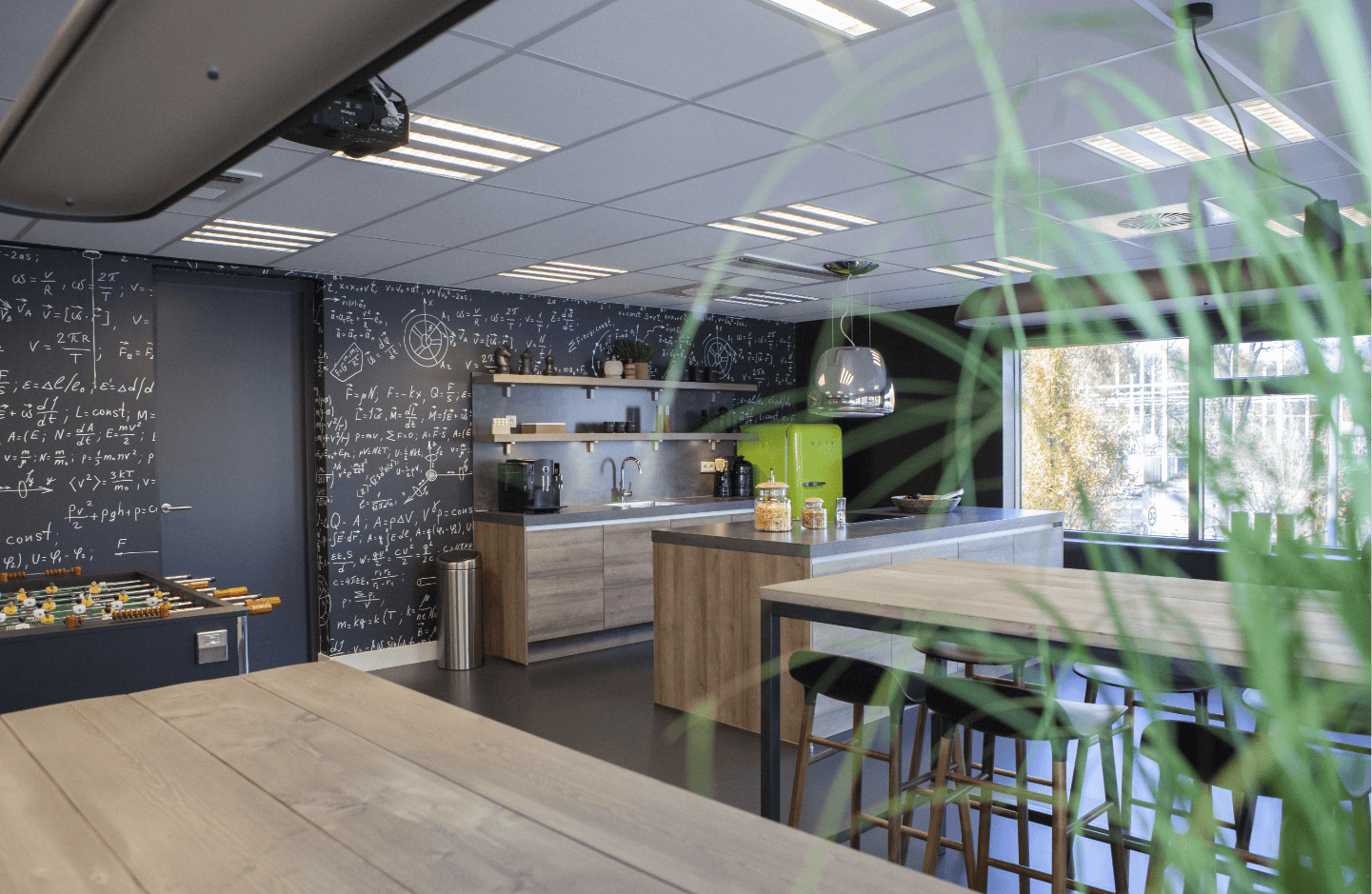-
A pressure reactor (stirred autoclave) is a chemical vessel, designed to create chemical reactions under pressure.
Laboratory pressure reactors are used to reproduce chemical reactions under pressure, hydrogenation, polymerization, crystallization, catalyst screening, (API & Zeolite) synthesis, and material research. The outcome of these experiments can be used to optimize a product or to gain insight of the behaviour of a product.
Suurmond supplies versatile, complete reactor systems, including frame or safety housing, magnetic drive, optional fast-action-closure, hydraulic lift, tilting mechanism and automation. The BÜCHI reactors are applied in a wide range of applications and can simply be configured for other processes.
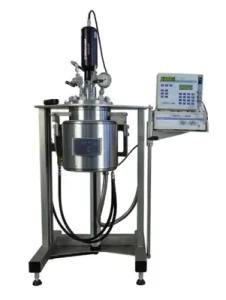
-
Pressure reactors (stirred autoclaves) in lab and R&D are mainly used to run e.g., experiments, chemical reactions under pressure, hydrogenation, catalyst screening, synthesis and material research. The outcome of these experiments can be used to optimize a product or to gain insight in the behavior of a product.
Suurmond supplies pressure reactors and complete hydrogenation systems for intensive daily use in laboratories, pilot plants/ kilo labs and small-scale production facilities. Including inert executions (no metal in contact with your process media).
Customized solutions for your specific process requirements. We supply pressure reactors from 0.1L up to 500L, up to 500 bar.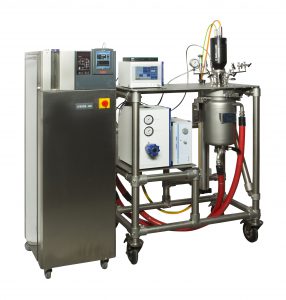
Polymerization reactor for polyolefin synthesis. -
Depending on the process, building pressure in a reactor can be done in several ways:
- Adding inert gas.
- Increasing the temperature in the reactor.
- Bringing about an accelerated chemical reaction by stirring.
-
For stirring reaction vessels made of metal or glass, stirrer drives with magnetic couplings are used. Due to their static sealing, they can be operated at full vacuum and very high pressures and high temperatures, for mixing of very high viscosity media.
A magnetic coupling is a coupling that transfers torque from one shaft to another. Magnetic couplings use a magnetic field rather than a physical mechanical connection, which eliminates the risk of leaking.
The BÜCHI magnetic couplings can be supplied with either slide bearings or ball bearings.
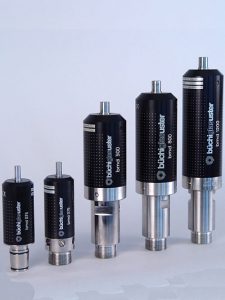
Magnetic couplings for pressure reactors, type bmd. For low to very high viscous media. For both FV applications and high pressure.
Glass reactor systems
-
Safe and reliable connections are crucial for dependable operation of Glass Reactors in the chemical and pharmaceutical industry. The most efficient and reliable manner to connect glass components stress-free, leak-free, and vacuum-tight is by using the «büchiflex» ball-socket glass connection. No compensators required!
The BÜCHI flexible «büchiflex» ball-socket glass connection, with its unique design, has proven to be a reliable and safe connection over the years in installations all over the world.
The patented ball/ socket joints perfectly fit together and are even vacuum-tight when they are not in line. Sizes available from DN 15-600.Replacement of glass components is easy. You can do it yourself!
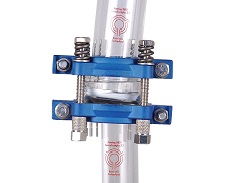
Büchiflex flexible glass connections. A patented ball/socket coupling with which glass structures can be assembled stress-free, leak-proof and vacuum-tight. -
Yes, the BÜCHI AG glass joints that we deliver are vacuum-tight. The patented glass connection system called ‘Büchiflex’ is made from a ball and a socket which fit perfectly together (thanks to the Büchi glass blowers). They are even vacuum-tight when they are not in line with each other, so even on an angle we can ensure a vacuum-tight connection.
The unique buchiflex connection was invented as the basis of a complete modular glass system with interchangeable components.
The exclusive design makes stress-free installation and maintenance a fast and easy job. Replacement of glass components is easy. You can do it yourself!
This flexible and vacuum-tight connection system results in short downtimes, reduces operation costs and increases productivity in chemical plants. No compensators required!
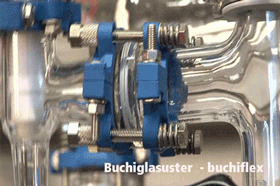
The application of reactors
-
Scale-up in R&D is the process to develop a product and move from small scale to a larger scale, hereby identifying and interpreting the impact on both physical and chemical characteristics of size changes.
The goal of upscaling is to identify and develop a process that allows a desired product to be successfully produced when manufactured on a commercial scale.
Suurmond supplies reactors made of glass and steel for various stages in scale-up.

Büchi pressure reactor and chemreactor. -
Every reaction must be assessed before scale-up to determine if there is any potential for uncontrolled events.
To scale-up, in each step both physical and chemical characteristics of the product must be identified and interpreted before moving to the next step.
Suurmond supplies small-scale pressure reactors up to pilot reactors and glass systems (chem reactors). For chemical and pharmaceutical development and manufacturing.
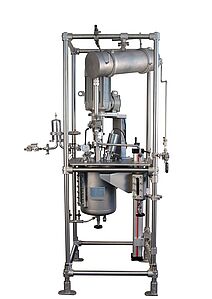
20 litre pilotclave with pressure distillation -
Parallel synthesis is used in the pharmaceutical industry to accelerate the discovery and development of potential drug candidates. Multiple automated pressure reactors are controlled from a single pc, with either parallel or individual operation.
Benefits from parallel synthesis vary from time savings and extra data created by running multiple experiments in parallel. Parallel synthesis applications include lead generation, lead optimization, and screening for optimum reaction conditions.
Researchers also herewith optimize processes through a better understanding of synthetic routes, solvent systems, optimum temperatures and concentrations, the right reagents, reaction times, and the selection of catalysts.
Suurmond offers solutions for parallel synthesis of SYSTAG and BÜCHI.
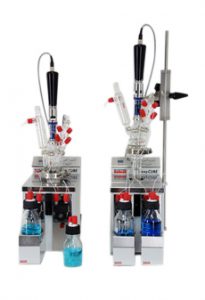
SYSTAG FlexyCUBE for parallel synthesis with up to 6 reactors. -
Hydrogenation describes the reduction of an unsaturated substrate by the addition of hydrogen atoms, often in the presence of a metal catalyst at elevated temperature and pressure. It is commonly performed in research, development, and manufacturing within the pharmaceutical, oil, agrichemical, and food industries.
The equipment needed includes pressure vessels, a gas dosing system, and a thermostat able to provide good temperature control. In addition, the hydrogen dispersal can be maximized by using hollow-shafted, gas entrainment stirrers, and catalyst baskets in different shapes.
Suurmond supplies a complete system for hydrogenation. The BÜCHI gas dosing system is a fully automated and safe system to inject the right amount of hydrogen and to log all data. The BÜCHI complete solution fulfils highest safety standards for hydrogenations under low and high pressure and is therefore a very reliable system. Multiple built-in safety features as built-in gas leakage sensors can trigger an immediate shut down of the gas supply.
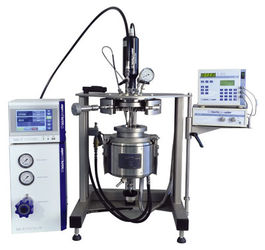
BÜCHI automated gas dosing system for hydrogenation processes. Complete with reactor and control system.

